Editor’s note: This guest post was originally written for Monster Librarian and published in April of 2012. A lot has happened since then, so it’s not as current as it could be, but it is still relevant.
WITHER, O’ ZOMBIE?
You’ve come a long way, you shambling, lifeless, flesh-eating sack of dead meat.
And I say that with deep affection.
Look at the way things have changed. When I was a teenager back in the 1970s, we used to pile into cars to go to the drive-in to see midnight shows of NIGHT OF THE LIVING DEAD. We referred to those monsters as…the living dead. The wisest among us floated the word ‘ghoul’. And that’s what Romero called them. No one had used the Z-word yet.
Then in 1978 Romero released his follow-up flick, DAWN OF THE DEAD. That film includes a single oblique reference to zombies. Early on in the film, Peter (played by Ken Foree), says, “You know Macumba? Voodoo. My granddad was a priest in Trinidad. He used to tell us, ‘When there’s no more room in hell, the dead will walk the Earth.’”
That’s the closest Romero got to calling his monsters ‘zombies’. It was only after the film was recut by Italian director Dario Argento and released as ‘Zombi: Dawn of the Dead’ that the Z-word became connected to the genre. Once it was there, it was there for good. It didn’t matter that Romero never considered his monsters to be zombies, despite that one reference in DAWN. They were ghouls to Romero, but for the rest of the world and probably the rest of history, they became zombies.
Since DAWN had a much larger release and was a more popular film (color, better acting, higher production values, and Tom Savini’s gruesome make-up effects gave it serious legs), a larger chunk of the mainstream audience began to become aware that there WAS a zombie genre. Though still loosely referred to as ‘those living dead’ films, the genre was in the process of expanding, with domestic and foreign films popping up everywhere. Some good (such as LIVING DEAD AT THE MANCHESTER MORGUE), some bad but highly entertaining (TOMBS OF THE BLIND DEAD), and some so appalling that it hurts my fingers to type their titles. So I won’t.
At the same time we had the first wave of zombie literature. It was John Skipp and Craig Spector who accomplished that with their legendary anthology, BOOK OF THE DEAD, featuring stories by Stephen King and a veritable A-list of horror writers. The book was a big hit and it proved that there was tremendous depth and scope in the genre. In his nonfiction book on the horror culture, DANSE MACABRE, Stephen King declared that zombies had become their own trope, as valid and individual as vampires, werewolves, and other notable monsters. He was right. (Uncle Stevie is often right when it comes to pop culture issues related to horror.)
Seven years after DAWN, Romero gave us DAY OF THE DEAD. The original script was ambitious, and it was a biting social commentary on the build-up of Ronald Reagan’s military-industrial complex. Unfortunately Romero didn’t get the budget to shoot the script he wrote. My personal opinion is that his DAY script would have likely resulted in the best damn zombie film ever made. It was Romero’s best writing without a doubt. But the bean counters in Hollywood chickened out. The result is an entertaining, if talky, third entry in the genre. It isn’t my favorite of Romero’s flicks (DAWN holds that spot), and it’s not the worst (SURVIVAL OF THE DEAD owns that trophy).
However it isn’t in the zombie movies that the best zombie storytelling is happening. Zombie books and comics have long since laid claim to the honor of driving the genre forward in the most interesting ways.
With Skipp and Spector’s BOOK OF THE DEAD and its sequel, STILL DEAD, standing as the establishing monuments of zombie lit, the bar was set very high. For the next decade or so the short story was the primary vehicle for fictional zombies. Then in the late 1990s there was a series of novels based upon and inspired by the Resident Evil video game. These books, written by noted media tie-in writer S.D. Perry, were very successful and the numbers intrigued publishers who began to scout around for other zombie books.
Then came the double-punch of Brian Keene’s THE RISING and Max Brooks’ THE ZOMBIE SURVIVAL GUIDE. Keene’s book is widely regarded as the novel that kick-started the zombie fiction firestorm. And it’s a corker, too. Rather than riffing on Romero’s zombies, Keene spins the story in a new direction, bringing in demons from the outer darkness. These books are thrilling, action packed and depressing enough to warrant being sold with a bottle of Prozac. Keene is a ‘take no prisoners’ kind of writer.
Brooks, on the other hand, was a comedy writer for SNL (and the son of Mel Brooks). He took a standard survival guide and rewrote it as a tongue-in-cheek manual for how to survive a zombie apocalypse. The fact that it’s played with a straight face sells it, and the book became a massive hit that crossed genre lines to sell deeply into the mainstream market. Well over a million copies have been sold.
Based on the strength of these two landmark books, the floodgates were opened for zombie literature.
Keene went on to write sequels to THE RISING, and even a Romero-esque standalone, DEAD SEA. He’s since moved onto other areas of horror and continues to scare the bejeezus out of his well-earned legion of rabid fans. (I count myself lucky to be both a fan and a friend of Brian’s. Had it not been for THE RISING, I doubt I would have tried my hand at zombie fiction.)
Max Brooks switched to fiction and wrote WORLD WAR Z, which is one of the most successful zombie novels ever written. WWZ is also a landmark book in that it is far from being a gore-soaked adventure novel. In fact, it starts ten years AFTER the zombie war is won. The whole story is written in what –in other hands—would be a dry style: a series of interviews conducted by an historian who is writing a socio-political account of the zombie outbreak, its spread, the near-apocalyptic war, and the aftermath. This book stands as one of the most insightful books on modern politics, and it’s proof positive that allegory and metaphor are solidly at the heart of the zombie genre.
With those two books serving as guideposts, the zombie literary scene was ignited. The genre blew up so fast and so big that it’s impossible to create a definitive list of subgenres. However here are some notable works that are, in their way, crucial milestones in the ever-evolving world of zombie lit.
BREATHERS: A Zombie’s Lament by S. G. Browne is biting social commentary, told from the point of view of a recently reanimated corpse.
PLAY DEAD by Ryan Brown is a sports novel with zombies. Dark humor, lots of action.
THE FOREST OF HANDS AND TEETH by Carrie Ryan is the first dystopian zombie novel for teens; and the first of a series.
BONESHAKER by Cherie Priest is a wild mash-up of Steampunk, apocalyptic action, science fiction, and fantasy.
DEAD CITY by Joe McKinney is an action novel with a strong message about the failure of government infrastructure during catastrophes like Hurricane Katrina. McKinney injected pure adrenaline into the genre.
PRIDE AND PREJUDICE AND ZOMBIES by Seth Grahame-Smith is a collision of classic literature and flesh-chomping horror. It was so wildly successful that it’s regarded as the best-selling zombie novel of all time as well as the book that kicked-off the literature/monsters mash-up genre.
MONSTER ISLAND by David Wellington is the first of a gritty, intelligent trilogy of novels that combines elements of dark fantasy with global politics.
GENERATION DEAD by Daniel Waters is the first teen angst novel featuring zombies.
PATIENT ZERO by Jonathan Maberry (yeah, that’s me) was the first action-oriented technothriller to feature zombies. It launched the Joe Ledger series of weird-science thrillers.
AUTUMN by David Moody, the first in a series of zombie novels that takes the genre in a fascinating new direction. If John Wyndham was alive and wrote zombie novels, they’d read like this.
DAY BY DAY ARMAGEDDON by J. L. Bourne is the first of a series of geo-political military thrillers set during a zombie apocalypse.
THE MORNINGSTAR STRAIN by Z.A. Recht is a series written by the late (and much missed Zach Recht) that explores the nuances of a global pandemic.
DYING TO LIVE by Kim Paffenroth is a series of zombie novels that explores the spiritual implications of the apocalypse.
XOMBIES by Walter Greatshell is one of the first major novels in the genre to focus on the female point of view. Great stuff.
Of course there are many other zombie books, some of great note, others less so, but in terms of impact on the genre, these books are all landmark.
So…where does the genre go from here?
That’s a good question. The genre lends itself to reinvention. The variety of storytelling we’ve had so far proves that. If you take any single subgenre mentioned above and read the other books in that specific subgenre, you will seldom find significant similarities. Take the Young Adult genre for example. Carrie Ryan’s FOREST OF HANDS AND TEETH is radically different from Alden Bell’s THE REAPERS ARE THE ANGELS, just as that is different from Charlie Higson’s THE ENEMY, and my own ROT & RUIN books.
You see, this unlimited variety comes from the nature of the monster itself. The zombie, with very few exceptions, has no personality. It is ‘The Threat’. It’s a symbol, a metaphor for other things that we’re afraid of, and since each of us is afraid of different things, and afraid of those things in uniquely individual ways, each book reflects that individuality. As long as we are frail humans with our many fears and vulnerabilities, we will always want to explore how those weakness or threats can be addressed and (ideally) understood and conquered. That’s pretty much the basis for all true drama right there.
I even put a new topspin on the ‘Zombie Outbreak’ subgenre with DEAD OF NIGHT, my latest novel. That book deals with a modern catastrophe that grows out of the misuse of Cold War bioweapons research. It was the fourth zombie novel I’d written, and it’s not even remotely similar to my other books. The genre is like that. Always different, always changing.
So…trends in zombie fiction? Anything. Everything.
Keep reading…it’s going to continue to be pretty damn exciting.
-Jonathan Maberry
April 2012
***********
Jonathan Maberry is a New York Times bestseller and multiple Bram Stoker Award-winning author, editor and Marvel Comics writer. He has written pre-apocalypse novels: Ghost Road Blues, Dead Man’s Song, Bad Moon Rising, Patient Zero, and The Dragon Factory; an apocalypse novel, Dead Man’s Song; apocalypse comics: Marvel Universe vs the Punisher and Marvel Universe vs Wolverine; and post-apocalyptic novel, Rot & Ruin, Dust & Decay, and Flesh & Bone. He hasn’t tackled Dystopian fiction yet…but you can pretty much assume he will. Find him online at www.jonathanmaberry.com and on Twitter, Facebook and GoodReads.
*************
DEAD OF NIGHT by NY Times best-seller Jonathan Maberry
St. Martin’s Griffin; available in trade paperback, hardcover, e-book and audio
A prison doctor injects a condemned serial killer with a formula designed to keep his consciousness awake while his body rots in the grave. But all drugs have unforeseen side-effects. Before he could be buried, the killer wakes up. Hungry. Infected. Contagious.
Small town cop Dez Fox and her partner JT are caught in a wave of murder as everyone they know and love die…only to rise again as the ravenous living dead. If Dez and JT can’t contain the plague inside the town limits, the infection will spread beyond all control.
This is the way the world ends. Not with a bang…but a bite.
Praise for DEAD OF NIGHT:
“Jonathan Maberry is the top gun when it comes to zombies, and with DEAD OF NIGHT, he’s at the top of his game. Frankly, I’m shocked by how effortlessly he moves between the lofty intellectual heights of T.S. Eliot’s poetry and the savage carnality of the kill. DEAD OF NIGHT develops with the fevered pace of a manhunt, and yet still manages to hit all the right notes. Strap in, because Maberry’s latest is one hell of a wild ride. I loved it.” – Joe McKinney, author of Dead City and FLESH EATERS
“Jonathan Maberry has created an homage to death itself and an homage to the undead that is as poetic as it is terrifying. It’s a brand new and intriguingly fresh slant on the zombie genre that we all love!” -John A. Russo co-screenwriter of NIGHT OF THE LIVING DEAD
“Maberry is a master at writing scenes that surge and hum with tension. The pacing is relentless. He presses the accelerator to the floor and never lets up, taking you on a ride that leaves your heart pounding. It’s almost impossible to put this book down. Dead of Night is an excellent read.” —S.G. Browne, author of BREATHERS
“It would be enough to say that Jonathan Maberry had topped himself yet again with an epic zombie novel that is as much fun as it is terrifying. But that he has also created a story of such tremendous heart and social relevance only further cements his place as a master of the genre. It also doesn’t hurt that in DEAD OF NIGHT he has created one of the most compelling heroines I’ve read in years. Dead of Night blew me away!” –Ryan Brown – Author of PLAY DEAD
“Once again, Jonathan Maberry does what he does best; Take proven science, synthesize it and create something truly terrifying. In DEAD OF NIGHT, Maberry lays the groundwork for a Bioweapon that could very well create zombies in the real world. Combining great characters (I fell in love with Dez Fox from the moment she was introduced) and taut, blindingly fast action, DEAD OF NIGHT, is a runaway bullet train of a ride. This is Jonathan Maberry’s best writing yet.” –Greg Schauer, owner Between Books, Claymont, DE
“Dead of Night stands drooped head and lurching shoulders above most zombie novels. The nightmare increases exponentially – from minor outbreak to major crisis with unstoppable speed, building to a heart-stopping climax you won’t be able to put down.” –David Moody, author of the HATER and AUTUMN books
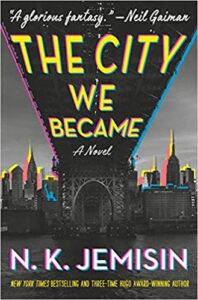
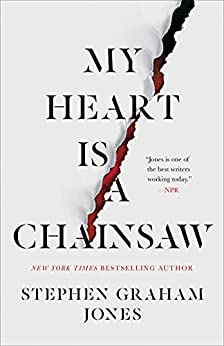
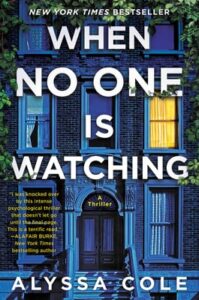
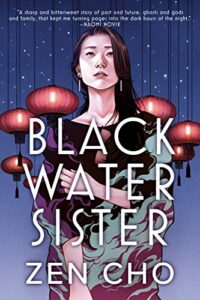
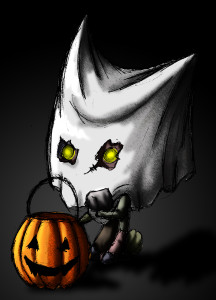




Follow Us!